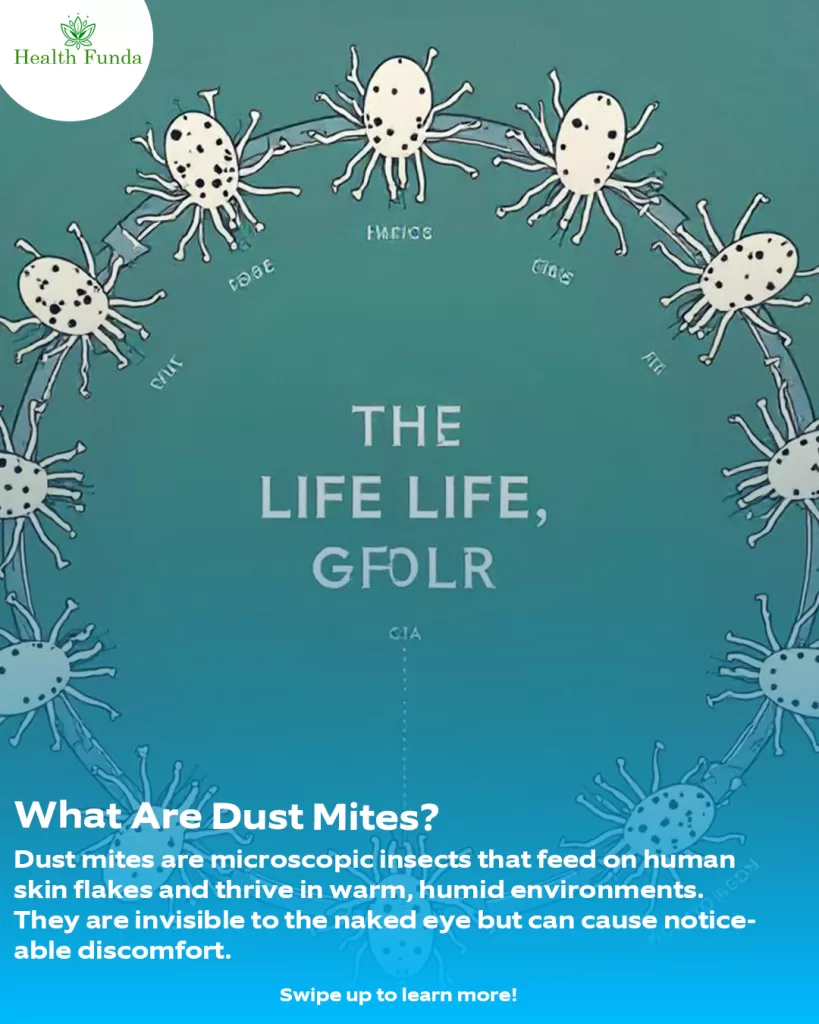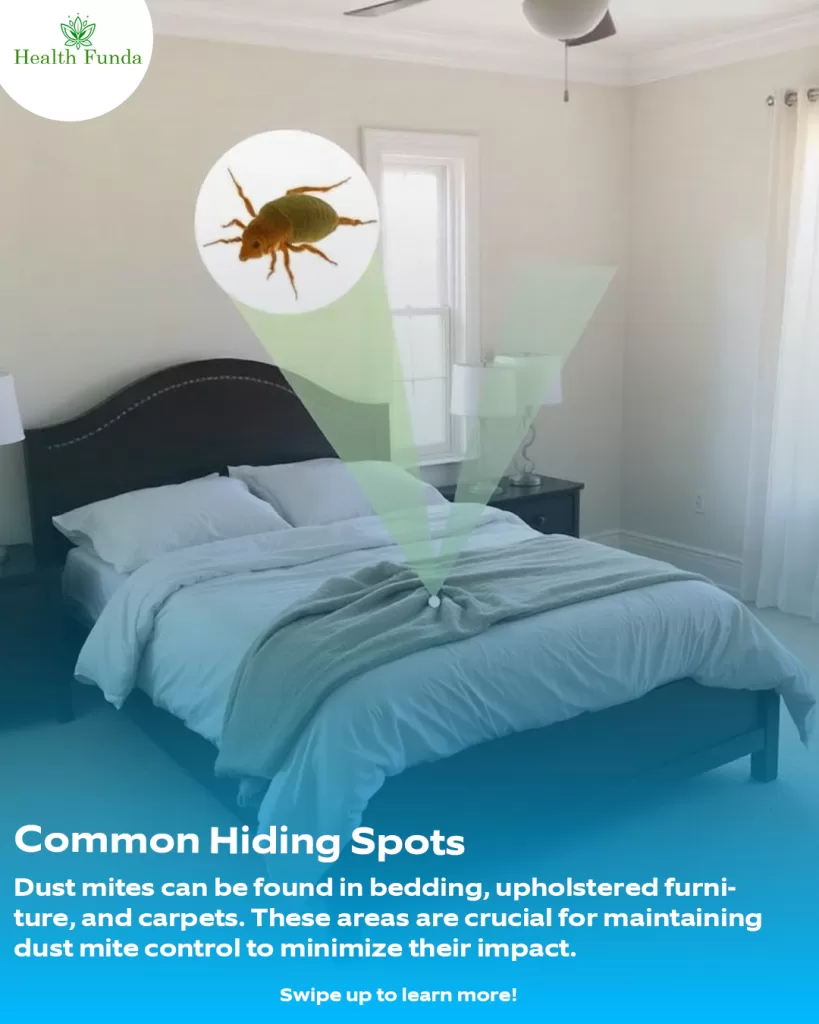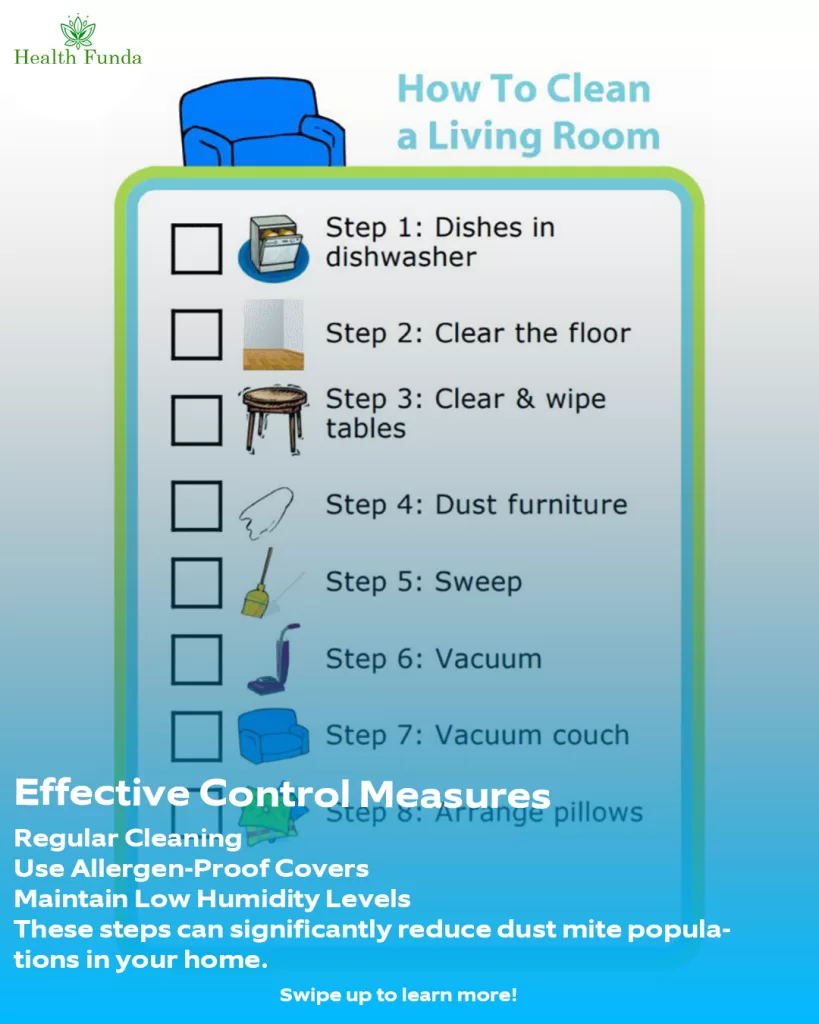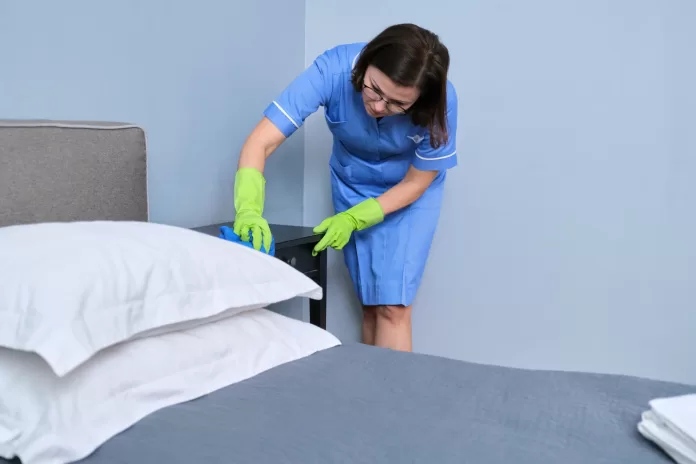In many Indian homes, dust mites are a common concern due to the often humid climate, which provides an ideal environment for these microscopic pests. Dust mites prefer a relative humidity of 70% to 80%, common in many regions across India. Understanding these conditions can aid in creating effective strategies to control their population indoors.

Health Impacts of Dust Mites
Dust mites are well-known for triggering allergic reactions and asthma, which are prevalent health issues in India. The proteins found in their secretions and feces are potent allergens that can cause sneezing, a runny nose, itchy or red eyes, coughing, and skin conditions like eczema. Asthma sufferers, who make up a significant portion of the population in India, may experience exacerbated symptoms due to dust mite exposure, leading to increased asthma attacks and respiratory issues.
Identifying Areas Prone to Dust Mites

To control dust mites effectively, it’s vital to pinpoint where they are most likely to thrive. Common household areas in Indian homes where dust mites accumulate include:
1. Bedding: Mattresses, pillows, and bed linens are prime habitats. The sleeping environment offers warmth and humidity, with a steady supply of skin flakes.
2. Upholstered Furniture: Sofas and chairs with fabric coverings provide a cozy niche for dust mites.
3. Carpets and Rugs: Popular in Indian households, these trap dust mites and provide a breeding ground.
4. Curtains and Drapes: Frequent in Indian homes, these gather dust and become dust mite havens.
5. Stuffed Animals: If not regularly cleaned, these can become infested with mites.
Strategies for Reducing Dust Mite Populations

Managing dust mites in Indian homes involves various strategies tailored to the local environment:
1. Regular Cleaning: Frequent sweeping and vacuuming, preferably with a HEPA filter vacuum, helps remove dust mites and allergens from carpets and upholstery. Washing linens in hot water (at least 55°C) weekly can kill dust mites.
2. Allergen-Proof Covers: Use dust-proof covers for mattresses and pillows to prevent colonization. Look for breathable yet impermeable options, readily available in Indian markets.
3. Humidity Control: Use dehumidifiers and air conditioning to maintain indoor humidity below 50%, discouraging mite populations. This is particularly important during the monsoon season.
4. Replace Carpets: Consider replacing carpets with tiles or hardwood floors, which are more common and easier to clean in Indian homes.
5. Reduce Clutter: Minimize stuffed toys, extra pillows, and fabric furniture to reduce dust mite habitats.
6. Wash Curtains and Upholstery: Regular cleaning of these items can further reduce mite numbers.
Community Insights and Further Learning
Connecting with a community, such as the All India Institute of Hygiene and Public Health, can provide insights and tips for managing dust mites. Online forums like HealthFunda.net also offer a platform for sharing experiences and strategies. Staying informed about the latest research and recommendations in allergy management and home hygiene practices is crucial.
Conclusion
Dust mites may be invisible, but their impact on your health can be significant. By understanding the conditions they thrive in and adopting practical strategies, you can effectively manage their presence in your home. Start with small changes and seek community support to ensure a healthy living space. Regular updates on the topic, along with community engagement, will keep you prepared to tackle dust mites effectively for the well-being of your family.
Explore HealthFunda.net for articles, expert opinions, and discussions focused on allergy-related topics and maintaining a healthy home environment.


